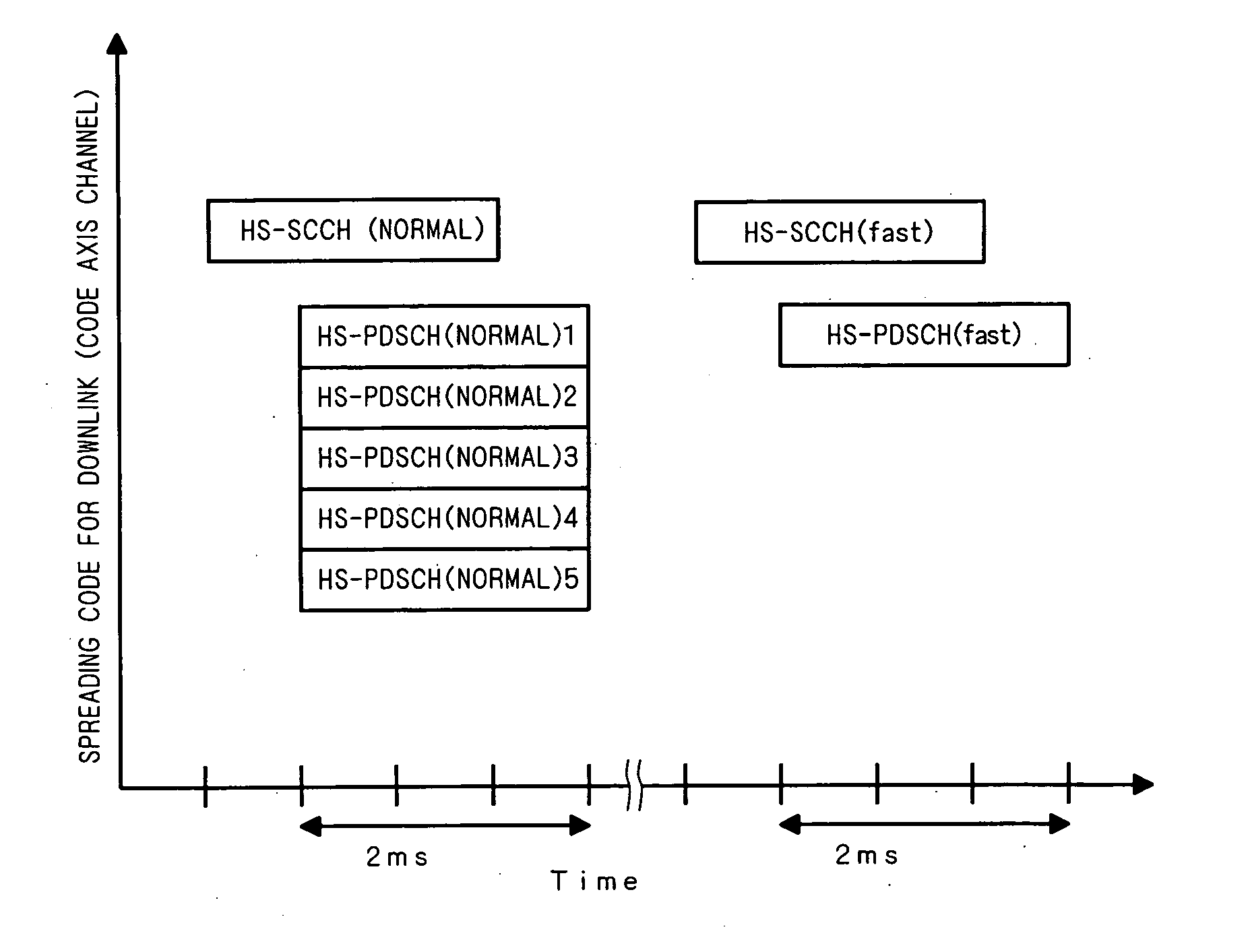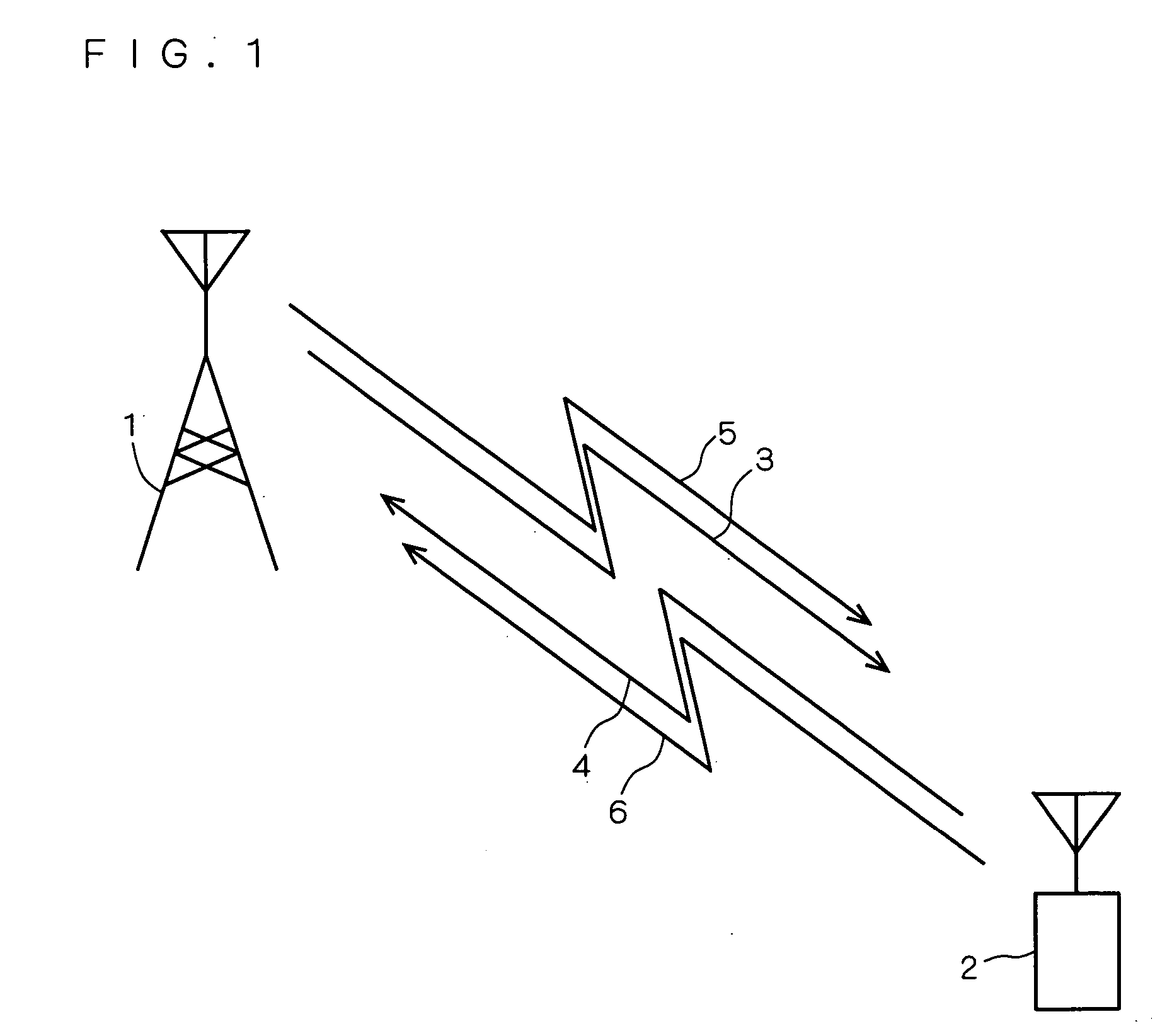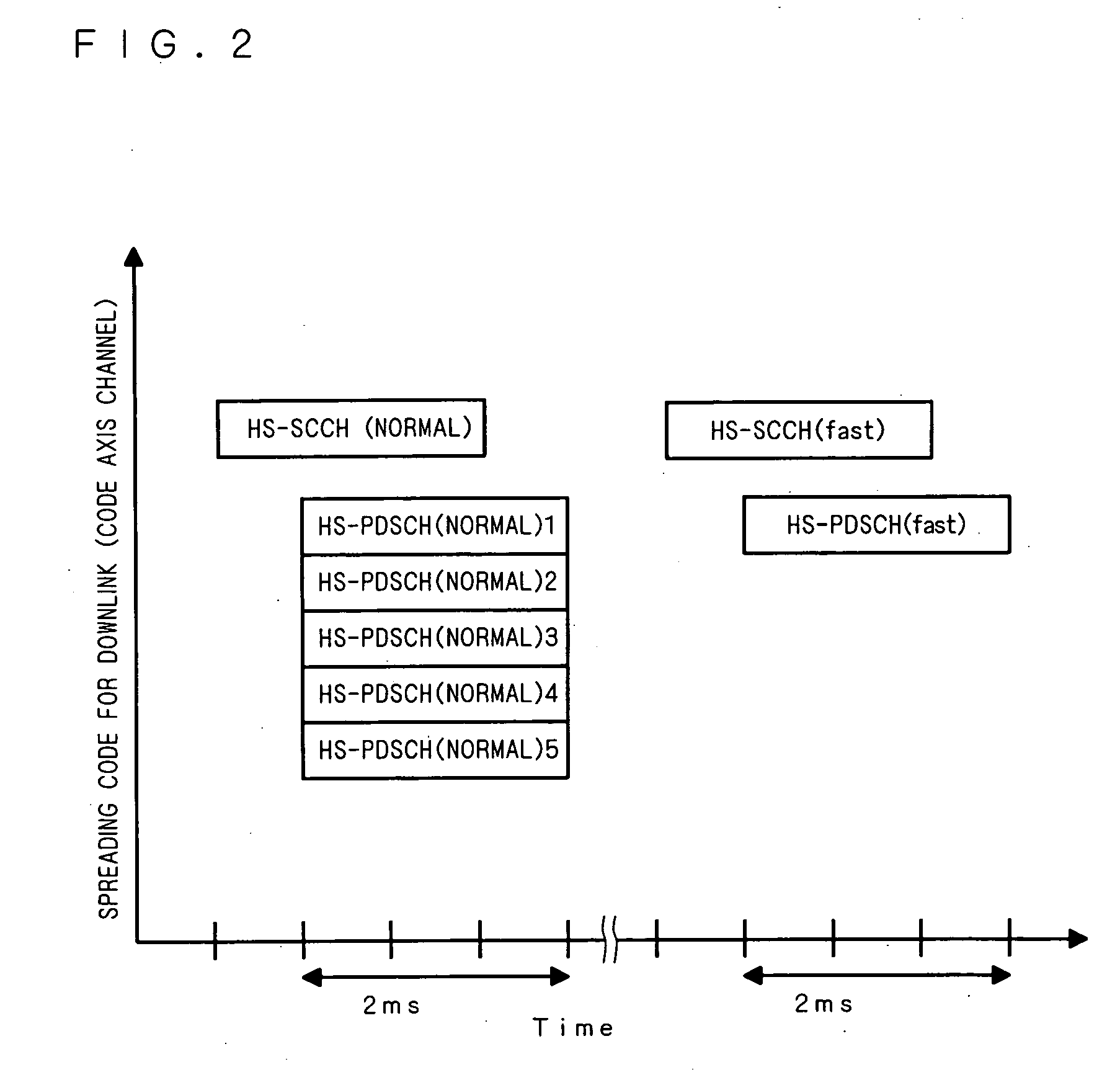Communication system, transmission station, and reception station
a communication system and transmission station technology, applied in the field of transmission stations, can solve the problems of large amount of power consumption, long processing delay, and large amount of processing at the rrc layer, and achieve the effect of reducing control delay to a mobile station withou, increasing processing delay and complexity of the devi
- Summary
- Abstract
- Description
- Claims
- Application Information
AI Technical Summary
Benefits of technology
Problems solved by technology
Method used
Image
Examples
Embodiment Construction
[0137] Preferred embodiments of the present invention will be explained below, taking a case as an example where control information for controlling a mobile station by a base station is control information on the number of to-be-received HS-SCCHs.
1. FIRST PREFERRED EMBODIMENT
[0138] A communication system according to a first preferred embodiment of the present invention will be explained below. The term “channel” used in the following explanation refers to either a communication path, or information or data being communicated.
[0139]FIG. 1 is a schematic view illustrating the general structure of the communication system according to the first preferred embodiment of the present invention. The communication system includes a base station 1, a mobile station 2, and downlinks 3, 5 and uplinks 4, 6 for connecting between the base station 1 and the mobile station 2. The downlink 3 is the Release 1999-compatible downward channels (DPCCH and DPDCH). The uplink 4 is the Release 1999-com...
PUM
 Login to View More
Login to View More Abstract
Description
Claims
Application Information
 Login to View More
Login to View More - R&D
- Intellectual Property
- Life Sciences
- Materials
- Tech Scout
- Unparalleled Data Quality
- Higher Quality Content
- 60% Fewer Hallucinations
Browse by: Latest US Patents, China's latest patents, Technical Efficacy Thesaurus, Application Domain, Technology Topic, Popular Technical Reports.
© 2025 PatSnap. All rights reserved.Legal|Privacy policy|Modern Slavery Act Transparency Statement|Sitemap|About US| Contact US: help@patsnap.com



